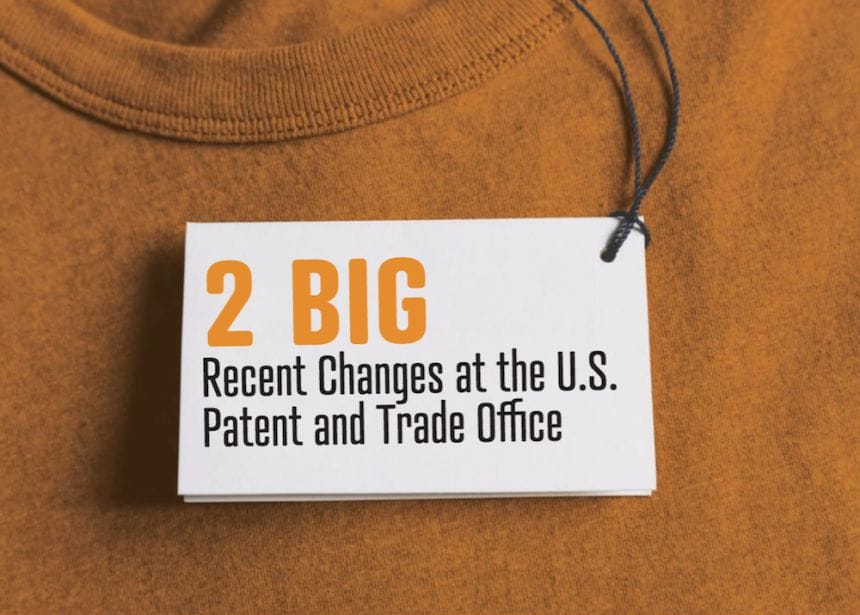By Cynthia Moyer and Michael Raum
Federal enforcement agency is giving trademark holders a strong message: Use and be able to prove usage of your trademark or ‘lose it.’
Many of our clients find themselves in trouble when they start taking their trademarks for granted. During the hustle and bustle of running a business, it’s easy to forget that trademarks that aren’t used can be abused by competitors and ultimately lost entirely if they’re not used frequently enough, with evidence provided as required by the federal enforcement agency.
To prove use, the U.S. Trademark Office requires that owners file “specimens” or examples of use of the mark. In July 2019, the Trademark Office announced it would be implementing new rules clarifying what would constitute an acceptable specimen to demonstrate use on goods.
First, if a screenshot from a website is submitted, the Trademark Office will require an image of the website that clearly shows the web site URL or the print date. This change is intended to curb the submission of digitally altered images.
Second, if an image of the goods themselves or their packaging is submitted, the specimen must show the trademark placed on the goods, the containers or packaging or on labels affixed to the goods.
Thus, a shipping label, for example, will no longer be acceptable, unless it is affixed to the goods. Likewise, a hangtag must be affixed to the goods to be acceptable. (Hang tags are labels attached to pieces of merchandise that include a variety of information, such as the name of the designer or manufacturer, care instructions or the fabric or material used for an item.)
These new requirements are expected to become effective in October 2019.
USPTO Adopts a More Aggressive Audit Program
If you are a trademark owner with registrations that identify multiple goods/services in a single class, you need to be prepared to prove use for all the goods/services listed if you get selected for the random audit.
This year, the Trademark Office intends to double the number of trademark registrations it audits, bringing the number of audits to 5,000. Prior to this rule change, the US Patent and Trademark Office conducted a two-year pilot program, randomly selecting 500 trademark registrations. The owners of the selected registrations were required to submit proof of use for additional goods/services per class in addition to the required one specimen per class and to verify use of the mark with the additional goods/services.
In 51 percent of the registrations selected for audit in the pilot program, the trademark owners failed to supply the additional verified proof of use. Specifically, the owners of 35 percent of the registrations selected for audit asked that the USPTO delete certain goods/services that the owners had initially claimed were in use with the mark. And 16 percent of the registrations were canceled because the owners failed to respond to the requirement for additional proof (or due to other issues raised).
The Trademark Office audits the accuracy of claims made by registrants in their post-registration maintenance filings made between the fifth and sixth years after registration, and every 10 years after registration. If a registration is selected for audit, the owner will be required to submit proof of use of the mark in connection with additional goods and/or services in the registration (in addition to what has already been submitted).
Audited registrations with unsubstantiated claims may be canceled in whole or in part. A registrant will learn if it is selected for a random audit by the issuance of a post-registration Office Action. The registrant will then have six months to respond to the audit, but if the registrant ignores the Office Action, the registration will be canceled.
If the registrant responds to the audit by deleting any goods and/or services, the registrant will receive a second Office Action that will require the registrant to submit proof of use of all remaining goods and services. Thus, when filing a maintenance or renewal document, it is extremely important to review all the goods and services in a registration, and to confirm that the mark is actually in use with all of them. If it is not, those goods and services must be deleted.
We have handled a number of post-registration audits already this year and it looks like they will become more and more common. By providing the correct specimens and making sure all related goods and services are included in your trademark registration, you’ll save significant amounts of time and money. And you won’t offend your trademarks by taking them for granted.
Stats
This year, the Trademark Office intends to double the number of trademark registrations it audits, bringing the number of audits to 5,000.
In 51% of the registrations selected for audit in the pilot program, the trademark owners failed to supply the additional verified proof of use.
Cynthia Moyer

Michael Raum









